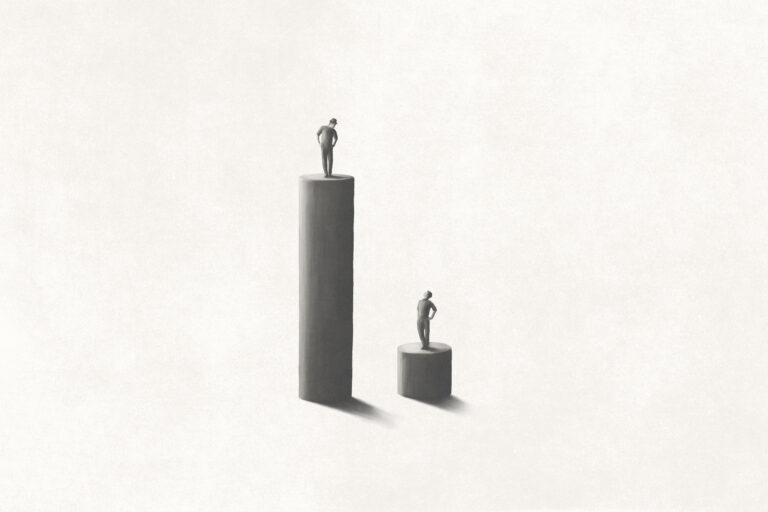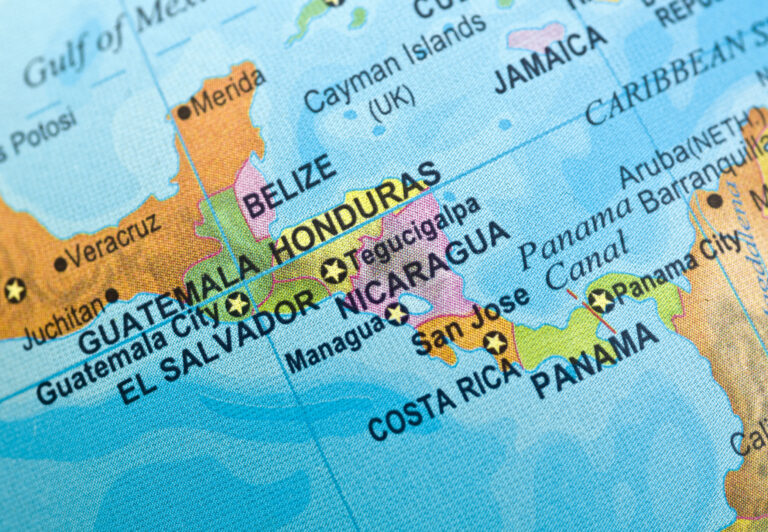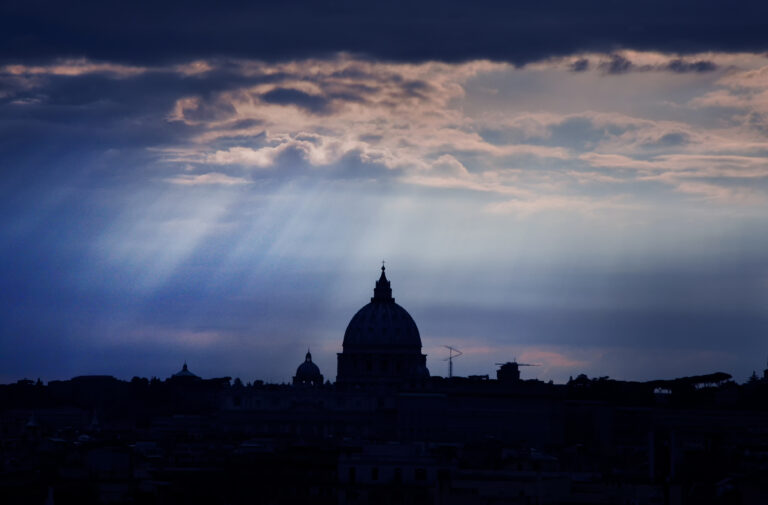The environmental movement has I warmly embraced the theory that we are wrecking the environment by burning fossil fuels. Their doomsday scenario goes like this: Combusting fossil fuels (gasoline, coal, etc.) raises the level of carbon dioxide in the atmosphere. This causes a “greenhouse effect,” trapping heat and raising temperatures around the globe. The resulting warming will have catastrophic effects: melting the polar icecaps, flooding low-lying coastal regions, and upsetting countless ecosystems. As evidence of the disaster that is upon us, the World Wildlife Federation points to “coral reefs bleached by increasing sea temperatures … alpine forests struggling to move to higher, cooler locations … polar bears under pressure as polar ice melts … glaciers melting on every continent.”
What does the World Wildlife Federation, joined by nearly all of the environmental movement, advise us to do? First it bids us listen to the “U.N. Inter-governmental Panel on Climate Change” (IPCC), the United Nations body charged with assessing the state of knowledge about climate change. In 2001, in its Third Assessment Report (TAR), the IPCC claimed that it would take an immediate reduction of at least 60 percent in CO2, emissions to stabilize concentrations in the atmosphere at their present level. While admitting that “making this kind of immediate reduction is impossible[!],” WWF nevertheless goes on to claim this is “the kind of pollution cut that’s needed to put the brakes on global warming.”
Two Degrees Celsius
But the key paragraph is this: Unless effective climate protection policies are introduced, carbon emissions could increase dramatically in the near future and put us on a pathway that would be very difficult to turn around. For this reason, WWF believes that temperature rise should stay well below 2 degrees Celsius in order to avoid a dangerous climate change. It has already been shown that 2 degrees C would already bring with it a set of impacts to coral reefs, arctic systems and local communities. We must therefore not go above this.”
Remember this figure of 2 degrees Celsius (about 3.6 degrees Fahrenheit). We will come back to it later.
Is any of this true’? Or is it merely the latest manic theory to proceed from the mouths of anti — people ideologues who, like former vice President Al Gore, are happy to have any excuse to ban the internal combustion engine and reduce the number of baby humans born? Thirty years ago, when I was a graduate student in the field of oceanography, I became interested in historic weather patterns and climate shifts1 an interest that I took with me as l moved into anthropology and Chinese studies.
Everyone is aware of the ice ages, when falling temperatures led to the formation of huge sheets of ice over much of North America, Asia, and Europe. These were separated by periods of warmer climate, when rising temperatures forced the glaciers to retreat and plant life proliferated. The cause of these huge shifts in climate over tens of thousands of years is still a matter of debate, but one thing is certain: It had nothing to do with human activity.
Climate also fluctuates over the centuries. Medieval Chinese texts dating from 800 to 1300 reveal a world much warmer than it is today. Rice, a warm weather crop, could be grown north of the Yellow River, something that has been all but impossible for the last seven hundred years. Tropical animals were found far north of their current distribution. The Medieval Warm Period, as it is called, was also experienced in Europe, allowing the Vikings to sail to Iceland and Greenland in open boats, and grapevines to grow in southern England. Beginning about 1300 the climate turned colder. The Greenland colonies died out, and the English went back to drinking beer. The Little Ice Age, as it is called, lasted until about1900. No one blames these shifts on human activity either.
The Warm Spell
But the world has been gradually warmer for about a century now and, this time around. according to the environmentalists, we humans and our infernal machines are to blame. They point to rising levels of carbon dioxide in the atmosphere as proof that we are fouling our own nest, and cry out, like so many Chicken Littles, that we are bringing a climatic apocalypse down on our heads.
Carbon dioxide levels are rising, to be sure, but there is widespread disagreement about what this means. Dr. Willie Soon, a physicist at the Solar and Stellar Physics Division of the Harvard-Smithsonian Center for Astrophysics in Cambridge. Massachusetts, explains that “the evidence about manmade CO2 causing global warming is nowhere close to that neat, but incorrect, conceptual picture of warming as in a greenhouse.”2
I’m a fan of Dr. Soon’s, but calling the carbon dioxide that we are putting into the earth’s atmosphere “manmade” is a little misleading. This carbon dioxide, or at least its constituent carbon and oxygen atoms, has always been part of the earth’s ecosystem. It was carbon dioxide eons ago before it was absorbed by photosynthesizing plants, which extracted the carbon atoms to make sugars, leafs, stalks and such. Of late, we’ve been putting back into the atmosphere some of what was there to begin with. And much of what we put into the atmosphere doesn’t stay there. It dissolves into the ocean, or is absorbed by growing plants. The ocean contains far more CO2 than the atmosphere, and is a natural buffer to excessive levels of carbon dioxide in the atmosphere. Increased levels of CO2 also encourage plant growth, most notably trees. Trees lock up carbon atoms for decades, if not centuries. So do landfills, which are burial grounds for all manner of paper and plastic products, all of which are based on…carbon. Homes — at least when these are built out of wood and wood products — likewise cut into the carbon atoms in circulation. Americans are constantly brow-beaten about their high consumption of fossil fuel, but it has been estimated that — because of reforestation, landfills, homebuilding, and the like — the United States is a net carbon sink. We store more carbon than we release each year.
Even if higher levels of carbon dioxide are a problem, we’re part of the solution.
The global warming crowd richly deserves to have their prognostications greeted with skepticism. After all, it wasn’t that long ago that they were warning anyone who would listen that the release of carbon dioxide into the atmosphere was causing…global cooling. The years from 1941 to 1975 were somewhat cooler than average, bucking the general warming trend of the twentieth century. By the 1970s, the alarmists were in full cry. A new Ice Age, we were told, one caused by the burning of fossil fuels, would soon be upon us. At conferences sponsored by the World Meteorological Organization, the scientific community appeared headed towards a consensus that “greenhouse gases” were causing catastrophic cooling. When temperatures began to rise again, many of these same scientists made a sudden about face, and began to argue that “greenhouse gases” were causing catastrophic warming. As Dr. Soon notes, “there are no real advances in scientific knowledge between the 70s and the 90s that would explaining those contrasting extremes in conviction.” This dramatic switch in opinion, in other words, is a question for psychologists, not climatologists, to ponder.
Greenhouse Effect and CO2
So should we all then relax about rising levels of CO2 in the atmosphere? We’ve already suggested that there are some natural feedback mechanisms that may help to check the rise in carbon dioxide, by taking it out of the atmosphere and storing it in other forms. There is also ample evidence that CO2 levels have fluctuated significantly in the earth’s past. And as to whether rising CO2, causes a “greenhouse effect.” one team of climate researchers has recently concluded that, at least in the case of one previous ice age, a warming climate preceded a rise in atmospheric carbon dioxide, rather than the reverse.
We’ve known for some time that the ends of ice ages were accompanied by big increases — 100 parts per million or so — in atmospheric CO2. Investigators initially assumed, without any hard evidence, that the CO2 buildup had come first, and that the resulting “greenhouse effect” caused the warmer climate. A more precise study has now called this scenario into question, for it shows that global warming preceded the rise of atmospheric CO2 by about 800 years.3 “Our data suggest that the warming came first, then carbon dioxide increased,” says lead scientist Jean Jouzel.4 Steven Hayward, commenting on the new study, remarks dryly that “Our knowledge of climate change may not be as advanced as we have thought.” That’s putting it mildly. If warming leads to a rise in carbon dioxide, perhaps by heating up the oceans and driving carbon dioxide out of solution (think of a soda can going flat), then it turns the conventional wisdom on its head.
Natural Occurance?
Is the rise in temperature of the last 50 years really all that unusual and unnatural, anyway? The Intergovernmental Panel on Climate change (IPCC) asserts that is. “The rate and duration of warming in the Northern Hemisphere during the 20th century was greater than any of the previous nine centuries,” says a much-quoted section of its 2001 report. “The 1990s were the warmest decade and that 1998 was the warmest year since 1861.” The IPCC claims that the latter half of the twentieth century is dramatically warmer than earlier periods, when human emissions of greenhouse gases were too small to significantly affect the climate of the globe.
These are testable assertions, and Dr. Soon and his colleague, Sallie Baliunas, set out to test them. They reviewed the available literature on the climate history of the last 1000 years, concluded that “79 of the 102 proxy temperature studies .… show that there were periods of 50 years or longer in a wide variety of locations around the world that had warmer temperatures than the 20th century…We conclude that the available scientific data do not support the claim that the 20th century was the warmest or most unusual of the millennium.”5 Still, CO2 concentrations are increasing these days, in part due to human activity. But how much they will increase over the next century, and how much global temperatures will rise as a result, are hotly debated questions. The IPCC. in its 2001 report, forecast that atmospheric CO2 would double from 1990 to 2100 and that, as a result, average global temperatures would increase by 1.4 to 5.8 degrees Celsius. These startling temperature predictions grabbed the attention of the media and the public. No one bothered to take a close look at the IPCC’s estimates of future economic growth and increased fossil fuel use, that were supposedly driving atmospheric CO2 — and hence temperature — upwards.
Economic Effects
No one, that is, until an Australian statistician, Ian Castles, and a British economist. David Henderson, joined forces to scrutinize IPCC’s economic forecasts.6 Castles and Henderson were dismayed by what they found. The IPCC based its estimates of future economic growth by converting everything to dollars, rather than taking into account the real value, in terms of goods and services, of developing world currencies. This undervalues the economies of developing countries, and grossly overstates their future economic growth. Just how flawed is their model? Very. Among the nations that the IPCC says will have a higher real income than the U.S. in 2100 are North Korea. Libya, and Algeria! South Africans will supposedly have a per capita income four times that of Americans. With typical academic understatement, Castles concludes that “there is no obvious reason for supposing that the overstatement of prospective growth rates and output levels in developing countries would NOT have led to a significant overstatement of projected emissions.” Castle and Henderson point out that the IPCC projections overstate “greenhouse gas” emission growth in the 1990s by roughly a factor of three. If projected emissions are too high, the projections of global warming are too high as well.
Back to 2 Degree Celsius
The IPCC is busily reworking its economic model — its next report is due out later this year — but let us make the assumption, modest enough under the circumstances, that the current model over-predicts C02 levels by a factor of three. This would mean that instead of temperature increases of 1.4 to 5.8 degrees Celsius, you get temperature increases over the next century on the order of .5 to 2 degrees Celsius. Now remember (way back at the beginning of this article) how the World Wildlife Federation demanded that the global temperature rise be kept below 2 degrees Centigrade? That “effective climate protection policies” be implemented without delay to “put the brakes on global warming.” It turns out that this may well be the maximum expected rise in temperature if we do nothing at all to reduce CO2 emissions.
Do not expect the environmentalists to rejoice if the predictions of a dramatic global warming are abandoned. Above all, do not expect them to apologize for advocating drastic economic restructuring on the basis of a flawed model. Rather, look for their demands to escalate. A rise of even one degree Celsius over the next century is intolerable, they will tell us. Population control programs must be continued. This is one crisis that they will not allow to go away.
Endnotes
1 Weather and climate are not synonymous, of course. Weather is what we all experience on a day-by-day or season-by-season basis. Climate is the long-term average of weather, over periods of 30 years or longer.
2 “Q & A with Willie Soon,” Monthly Planet (CEI, Washington, D.C., 2003) 16: 10. Pp. 6–7.
3 Nicolas Caillon, Jeffrey P. Severinghaus, Jean Jouzel, Jean-Marx Barnola, Jiancheng Kang, and Volodya Y. Pipenkov, “Timing Atmospheric C02 and Antarctic Temperature Changes Across Termination III,” Science (299), 14 March 2003, 1728–1973.
4 www.nature.com/nsu/030310/030310-12.html
5 Willie Soon and Sallie Baliunas, Lessons and Limits of Climate History: Was the 20th Century Unusual? (The Marshall institute, Washington, D.C.: 2003), 1. This is a general summary of their work, which was also published in peer-reviewed scientific journals. See Soon and Baliunas, “Proxy Climate and Environmental changes of the Past 1,000 Years,” Climate Research, 23: 89–110.
6 See www.lavosier.com.au/papers/articles/PPCissues.html. The Economist summarized the works of Castles and Henderson in their 13 February 2003 article entitled “Hot Potato: The Intergovernmental Panel on Climate Change Had Better Check Its Calculations.”










